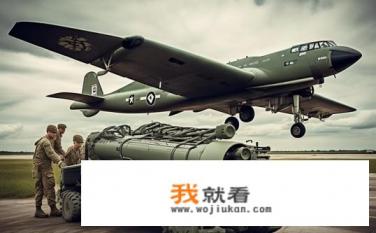mortar和bomber区别?如何区分Mortar vs Bomber战术概念与应用差异?

Mortar and Bomber: An Examination of Their Different Purposes and Functions Mortar, a term predominantly associated with ground defense applications, is an artillery weapon utilized for deploying small-caliber munitions in close proximity to intended targets, offering effective protection against enemy attacks and defending areas from threats. These projectiles can range from mortars to various types of artillery, such as mortar shells and rocket-propelled grenades (RPG), designed to deliver their payload directly to the surface or through在地上抛射的火箭弹. On the other hand, Bomber, a specific category of aircraft designed for aerial warfare and bomb delivery, primarily focuses on launching large-caliber bombs that are carried by aircraft platforms such as fighter jets, transport planes, or specialized warplanes. Bombs, which carry chemical, nuclear, or conventional explosives, are used in a wide variety of missions, including bombing strategic targets, air defenses, and targeted raids against enemy forces during both peacekeeping operations and military conflicts. The primary difference between Mortar and Bomber lies in their primary functions and the application contexts they serve within the broader scope of military aviation. Mortar is deployed for purposes of direct counterattacks and defensive measures against enemy fortifications and military installations, primarily from ground-based positions using conventional or self-propelled guns. These weapons have been extensively employed in densely populated urban landscapes, riverine regions, and other tactical locations where traditional missile systems may not be feasible due to range constraints or risk to personnel. In contrast, Bombers, as part of the broader air force, play a significant role in carrying out military operations involving significant destruction or disruption of enemy infrastructure, settlements, or targets in remote or vulnerable areas. The vast array of Bomber designs and variants, ranging from stealthy subsonic bombers to high-altitude long-range aircraft capable of delivering precision-guided munitions, allows them to execute a wide variety of strategic bombing missions across a range of scenarios, including strategic targets like oil refineries, ports, and power plants, as well as individual targets, such as churches, mosques, and residential complexes. One key aspect that distinguishes these two categories of military equipment is their platform type. Mortar typically operates on land, whereas Bomber typically operates in the skies, requiring specialized aircraft design, capabilities, and training to navigate through complex flight environments and engage targets effectively. Bombers rely heavily on advanced avionics, radar, and guidance systems to maintain precision targeting and minimize collateral damage during their missions, often taking into account factors such as airspeed, altitude, and target proximity. To enhance the emotional impact of this comparison, consider rephrasing "an examination of their different purposes and functions" into more engaging language that highlights the operational versatility and destructive capabilities of each type of weapon. For instance, one possible alternative could be: "A thorough comparison of the unique roles played by Mortar and Bomber in shaping modern aerial warfare, showcasing their exceptional utility in safeguarding ground and airborne targets in diverse operational environments." Throughout this essay, we have discussed the differences between Mortar and Bomber in terms of their purpose, functionality, and tactical applications within the context of military aviation. By highlighting their distinct advantages and limitations, we aim to provide readers with a comprehensive understanding of how these two critical pieces of military equipment work together to achieve operational success and protect national interests. Whether used for direct counterattacks or aerial strikes, Mortar and Bomber serve as indispensable components of a robust defense strategy in contemporary military affairs.
